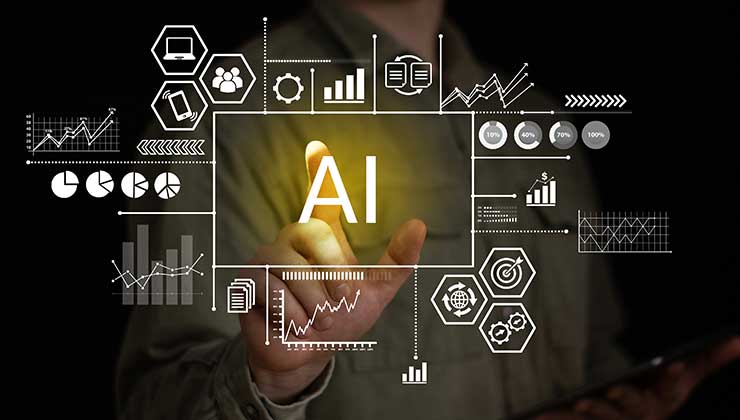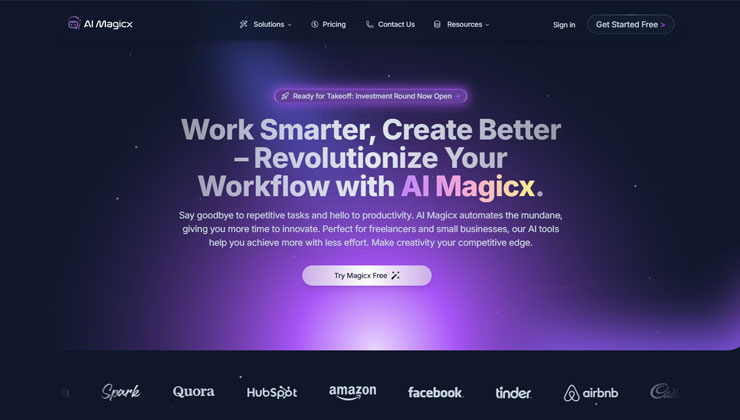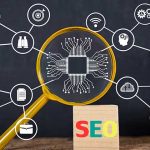AI will revolutionize marketing with personalized experiences and data-driven insights. Marketers must adapt to AI tools to stay competitive.
Artificial Intelligence (AI) is transforming the marketing landscape. It offers unparalleled opportunities for personalization and efficiency. AI analyzes vast amounts of data to predict consumer behavior and optimize campaigns. This technology enables marketers to create more targeted and effective strategies.
Businesses can enhance customer engagement and drive better results by leveraging AI. As AI continues to evolve, its role in marketing will only grow. Marketers must embrace these advancements to stay ahead. AI-driven tools will become essential for competitive marketing strategies. Staying informed about AI trends and tools is crucial. The future of marketing is undeniably intertwined with AI innovation.
Ai-driven Personalization

AI-driven personalization is changing how businesses connect with customers. This technology tailors marketing efforts to individual needs. By analyzing data, AI can create unique experiences for each user. Below, we explore how AI enhances customer segmentation and content tailoring.
Customer Segmentation
Customer segmentation divides a market into smaller groups. These groups share similar characteristics. AI can analyze large datasets to find patterns. This helps in identifying unique customer segments.
- Demographic Segmentation: Age, gender, income, and education.
- Behavioral Segmentation: Purchase history, brand loyalty, and usage rate.
- Geographic Segmentation: Location, climate, and population density.
- Psychographic Segmentation: Lifestyle, values, and personality.
AI can also predict future behavior. This allows for dynamic segmentation. Marketers can then target the right audience more effectively.
Tailored Content
AI can create personalized content for each user. This increases engagement and conversion rates. Here are some ways AI tailors content:
- Product Recommendations: Suggests items based on past purchases.
- Email Campaigns: Sends personalized emails with relevant offers.
- Dynamic Web Pages: Adapts website content based on user behavior.
- Chatbots: Provides personalized responses and support.
AI uses Natural Language Processing (NLP) for content creation. This ensures the content is relevant and engaging. Marketers can also use AI to A/B test different content variations. This helps in finding the most effective messages.
| AI Personalization Technique | Benefit |
|---|---|
| Customer Segmentation | Targets specific groups more accurately |
| Tailored Content | Increases user engagement |
| Product Recommendations | Boosts sales |
| Email Campaigns | Improves open and click-through rates |
AI-driven personalization offers many benefits. It helps in delivering the right message to the right audience. This leads to better customer experiences and higher conversions.
Chatbots And Customer Service
The future of AI in marketing is reshaping how businesses interact with customers. One of the most exciting advancements is in chatbots and customer service. These AI-driven tools are revolutionizing support, making it faster and more efficient.
Real-time Assistance
Chatbots provide real-time assistance to customers. They can answer questions, resolve issues, and guide users through processes instantly. This reduces wait times and improves user satisfaction.
Imagine a customer needing help with a product feature. A chatbot can immediately provide the necessary information, enhancing the overall experience.
24/7 Availability
One of the key benefits of chatbots is their 24/7 availability. Unlike human agents, chatbots do not need breaks or sleep. They are always ready to assist.
This constant availability ensures that customers can get help anytime, from anywhere. This is crucial in a global market where time zones vary.
| Benefit | Description |
|---|---|
| Real-Time Assistance | Instant responses to customer inquiries |
| 24/7 Availability | Support available at all hours |
Chatbots are not just for answering questions. They can also handle complex tasks. For example, they can process orders, track shipments, and even handle returns. This versatility makes them a valuable asset for any business.
- Instant responses to common questions
- Always available support
- Handles complex tasks efficiently
The integration of AI in customer service is not just a trend. It is a necessity for businesses aiming to stay competitive. With real-time assistance and 24/7 availability, chatbots are set to transform how we perceive customer support.
Predictive Analytics

Predictive analytics is transforming marketing by enabling data-driven decisions. It leverages machine learning to predict customer behavior and sales trends. This helps businesses optimize their strategies and resources effectively.
Customer Behavior
Understanding customer behavior is vital for any marketing strategy. Predictive analytics uses historical data to forecast future actions. This helps businesses anticipate customer needs and personalize their experiences.
For instance, predictive models can identify which customers are likely to churn. Companies can then take proactive steps to retain them. They can also predict customer lifetime value, helping prioritize high-value customers.
- Identify patterns in customer purchases
- Predict future buying trends
- Enhance customer segmentation
Sales Forecasting
Sales forecasting is crucial for planning and resource allocation. Predictive analytics provides accurate sales predictions based on past data. This helps businesses make informed decisions about inventory, staffing, and marketing campaigns.
With predictive analytics, companies can:
- Forecast seasonal sales trends
- Adjust marketing strategies in real-time
- Optimize supply chain management
| Benefits | Examples |
|---|---|
| Improved accuracy | More precise sales forecasts |
| Better resource management | Optimal inventory levels |
| Enhanced customer experience | Personalized marketing campaigns |
Content Generation
The future of AI in marketing is shaping the landscape of content generation. AI tools are transforming how content is created and delivered. This section explores two key areas: Automated Writing and Visual Content Creation.
Automated Writing
Automated writing uses AI to create text without human input. Tools like GPT-3 generate articles, blogs, and social media posts. This saves time and resources for businesses.
Key Benefits:
- Quick content creation
- Consistent tone and style
- Scalability for large projects
AI can also personalize content for different audiences. It analyzes user data to tailor messages. This increases engagement and conversion rates.
Many businesses use AI for SEO-friendly content. AI tools optimize keywords and structure. This helps improve search engine rankings.
Visual Content Creation
AI is revolutionizing visual content creation. Tools like Canva and Adobe Spark use AI to design graphics. This simplifies the design process for non-designers.
Key Features:
- Template suggestions
- Automatic color matching
- Intelligent image editing
AI can also generate videos and animations. Platforms like Lumen5 create video content from text. This enhances marketing campaigns with engaging visuals.
Visual content is crucial for social media and websites. AI ensures visuals are high-quality and relevant. This attracts and retains customers effectively.
| Tool | Function |
|---|---|
| Canva | Graphic design |
| Adobe Spark | Image editing |
| Lumen5 | Video creation |
AI-driven content generation is the future of marketing. It offers efficiency and personalization. Businesses that adopt these tools gain a competitive edge.
Voice Search Optimization

The future of AI in marketing is bright. One key area is Voice Search Optimization. Voice search is changing how users find information. Optimizing for voice search is crucial for businesses to stay relevant.
Voice Seo Strategies
Voice SEO involves optimizing your content for voice search queries. These queries are usually longer and conversational.
- Use long-tail keywords
- Focus on natural language
- Optimize for local searches
- Provide direct answers to questions
Long-tail keywords are specific phrases users might say. For example, “best pizza near me” instead of “best pizza”. These keywords help you rank higher in voice search results.
Natural language means writing how people speak. Use simple, clear sentences. Make your content easy to understand.
Local searches are crucial for voice SEO. Many voice searches are location-specific. Ensure your business information is up-to-date on Google My Business. Include your address, phone number, and business hours.
Answering questions directly can boost your voice search ranking. Use FAQ pages to address common questions. Provide clear, concise answers.
User Experience
Optimizing for voice search improves the user experience. Users want quick, accurate answers.
| Aspect | Importance |
|---|---|
| Page Speed | High |
| Mobile-Friendly | High |
| Structured Data | High |
Page speed is vital. Slow pages frustrate users. Aim for a load time under 3 seconds. Use tools like Google PageSpeed Insights to check your speed.
Ensure your site is mobile-friendly. Many voice searches happen on mobile devices. Use responsive design to adapt your site to different screen sizes.
Structured data helps search engines understand your content. Use schema markup to provide context. This can improve your chances of appearing in voice search results.
Voice search optimization is essential for future marketing strategies. Implement these tips to stay ahead of the curve. Enhance your visibility and user experience.
Ai In Social Media
Artificial Intelligence (AI) is transforming how businesses use social media. AI tools help brands understand trends, target ads, and engage users better. This section explores how AI in social media is reshaping the marketing landscape.
Trend Analysis
AI helps businesses monitor social media trends in real time. AI-powered tools can analyze vast amounts of data quickly. They identify trending topics, hashtags, and user sentiments. This helps brands stay relevant and engage with their audience effectively.
For instance, AI tools can detect a surge in discussions about a new product. Brands can then create targeted content around this trend. This ensures that their content is timely and resonates with their audience.
Ad Targeting
AI enhances ad targeting by analyzing user data and behavior. It can segment audiences based on interests, demographics, and online activity. This results in more personalized and effective ads.
| AI Ad Targeting Benefits | Description |
|---|---|
| Precision | AI targets specific user groups more accurately. |
| Cost-Efficiency | Reduces ad spend by focusing on high-potential customers. |
| Engagement | Increases user interaction with personalized ads. |
AI can also optimize ad placements in real time. It can determine the best times and platforms to display ads. This maximizes visibility and engagement, ensuring a higher return on investment (ROI).
For example, AI can identify that a specific user is more likely to engage with video ads. Brands can then allocate more budget to video ad placements for that user group. This targeted approach increases the likelihood of conversions.
Ethical Considerations
The future of AI in marketing brings exciting possibilities. But it also raises important ethical questions. These considerations ensure the technology is used responsibly.
Data Privacy
Data Privacy is a major concern with AI in marketing. Marketers collect vast amounts of data from users. This data helps create personalized experiences. But it also poses risks.
Users want to know how their data is used. They need assurance their information is safe. Marketers must follow strict guidelines to protect user data.
| Guideline | Description |
|---|---|
| Transparency | Inform users about data collection practices. |
| Consent | Obtain user permission before collecting data. |
| Security | Implement strong security measures to safeguard data. |
Bias In Algorithms
Bias in Algorithms is another ethical challenge. AI algorithms can be biased. This happens if the data used to train them is biased.
Bias can lead to unfair treatment of certain groups. It can affect marketing decisions. To address this, marketers must ensure diverse and unbiased training data.
- Use diverse datasets to train AI models.
- Regularly audit AI systems for bias.
- Implement corrective measures if bias is detected.
By addressing data privacy and bias, marketers can use AI ethically. This builds trust and enhances user experience.
Future Trends

The marketing landscape is evolving rapidly with the advent of AI. Understanding future trends can help businesses stay ahead. This section delves into emerging technologies and industry predictions shaping the future of AI in marketing.
Emerging Technologies
Several new technologies are transforming AI in marketing:
- Natural Language Processing (NLP): Enhances customer interactions with chatbots.
- Predictive Analytics: Provides insights based on customer data.
- AI-Powered Personalization: Tailors content to individual preferences.
These technologies create more engaging customer experiences.
Industry Predictions
Experts have several key predictions for AI in marketing:
- Increased Automation: Many tasks will be automated.
- Enhanced Customer Insights: Businesses will gain deeper insights.
- Greater Personalization: Marketing will become more personalized.
These predictions indicate a more efficient and targeted marketing future.
Frequently Asked Questions
What Is The Future Of Marketing In AI?
AI will revolutionize marketing with personalized experiences, data-driven insights, and automated campaigns. Brands will reach target audiences more effectively, boosting engagement and sales.
What Is The Future Of Marketing Agencies With AI?
AI will revolutionize marketing agencies. Automation will streamline tasks, enhance personalization, and improve data analysis. AI-driven insights will lead to more effective strategies. Agencies must adapt and integrate AI to stay competitive.
What Is The Forecast For Ai Marketing?
AI marketing is expected to grow rapidly. Businesses will increasingly leverage AI for personalized marketing. This will enhance customer experiences. AI tools will drive data-driven decisions. The future of AI marketing looks promising.
How Is AI Being Used For Marketing?
AI is used in marketing for personalized ads, customer segmentation, chatbots, predictive analytics, and content creation. It enhances targeting and improves customer engagement.
Conclusion
Embracing AI in marketing is essential for staying competitive. Businesses can achieve better targeting and efficiency. Adopting AI tools can lead to significant growth. Keep up with AI trends to leverage new opportunities. The future of marketing lies in AI’s innovative capabilities.
Start integrating AI now to stay ahead.






